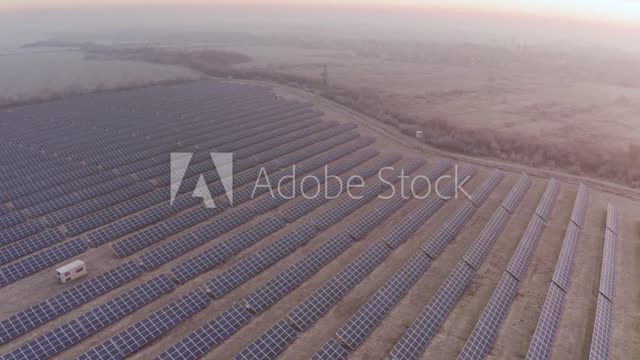Premium Only Content

Why doesn’t every roof have solar panels?
s/Rooftop solar is growing fast, but it’s not growing at the same pace everywhere.
Grist / Amelia Bates
Emily Pontecorvo
Reporter
Published
Jun 24, 2021
Topic
Climate + Ask Umbra
Share/Republish
Twitter
Facebook
Republish
Dear Umbra,
Why isn’t rooftop solar more highly touted as a climate change solution? I know it’s small scale, but it’s something that an individual person can actually DO. I love my solar panels, and I would like to see them on every flat surface that gets sunlight — schools, stores, churches, storage units, etc. Is it politics, economics, supply issues? It just seems so obvious to me!
— Solar Usage Needs Nurturing, Y’heard?
Dear SUNNY,
It might feel like solar panels have been around long enough that they should be plastering the built environment. After all, Jimmy Carter first put panels on the White House roof more than 40 years ago. But your vision of solar utopia maybe a little ahead of the times. “Solar has only really been this economic for about five years,” Jenny Chase, the head of solar analysis at the energy research firm BloombergNEF, told me. Major home renovations don’t happen overnight.
Chase said that since 2004, when rooftop solar first started to take off in Germany, the cost of a solar module on the world market has declined from $4 per watt down to just $0.24 today. And considering how recently the cost came down, rooftop solar is bigger than you might think. Installations around the world have increased by an average of 25 per cent per year. The U.S. has about 2.8 million installations, with more than a million in California, where rooftop solar supplies about 10 per cent of the state’s electricity. And these numbers are growing fast. Even though the clean energy industry ground to a halt at the start of the COVID-19 pandemic, 2020 saw a record high in new rooftop solar capacity.
But despite amazing cost declines over the past decade, it’s still a major investment. Though total costs depend on the size of your home and which subsidies and loan programs are available in your area, the sticker price of an average-sized home installation in the U.S. is about $20,000, according to the Solar Energy Industry Association.
The truth is, SUNNY, rooftop solar is growing fast, but it’s not growing at the same pace everywhere, and it’s not as accessible to everyone as it may have been to you.
To start, let’s talk about your initial question. Why doesn’t rooftop solar get more attention as a climate solution? One reason policy experts tend to downplay rooftop solar is that it typically costs a lot more to install a handful of panels on a million roofs than to plant a vast crop of them across a field or a vacant lot. The National Renewable Energy Laboratory estimates that installing rooftop solar can cost nearly three times as much, per watt, as a big utility-scale project.
But that kind of thinking ignores a number of advantages of rooftop solar, like the fact that it doesn’t increase competition for land or threaten ecosystems. Putting panels on roofs can create more local jobs and economic development than big projects. When combined with batteries, they can provide a household with backup power when the grid goes down. A recent analysis by consulting firm Vibrant Clean Energy has even challenged the conventional wisdom that large-scale solar is cheaper. It found that deploying lots of rooftop solar, about 13 times as much as the U.S. has today, by 2050, combined with more battery storage systems, could save Americans hundreds of billions of dollars on electricity in the long run because of the services these distributed sources of energy provide to the grid.
I asked Chase, who spends her life thinking about these kinds of trade-offs if she thought it made sense to put solar on everything, as you suggest, and she said yes. “Frankly, solar panels themselves are so cheap these days, I don’t think it makes much sense to build a roof without them if that roof is even vaguely facing the sun,” she said.
Even though the panels themselves are so cheap, installation costs can vary widely. Chase said it’s far more expensive to put solar on your roof in the U.S. than in the rest of the world. That’s in part thanks to former President Donald Trump, who imposed steep import tariffs on solar panels. But the biggest source of that disparity is what are known as “soft costs” — the cost of administrative time sucks like getting the right permits.
I spoke to Anne Hoskins, the chief policy officer at Sunrun, which is the largest solar installer in the U.S. She said that permitting is a major obstacle for the company — it has to navigate the individual permitting requirements of thousands of local governments around the country. “It adds time, it adds cost, and just adds what we refer to as friction,” she said.
There may be some progress made on this front soon. The National Renewable Energy Laboratory recently released a piece of software called SolarApp that local governments can adopt that would help standardize permitting and automate much of the process of getting rooftop solar approved.
About Us https://bit.ly/3GUPFOa
Contact: +919942258153 kvk.subadhra@gmail.com
Thank You Very Much for Sharing YourValuable Thoughts
-
 1:02:26
1:02:26
Kim Iversen
3 hours agoIran Rejects Nuclear ‘Spy’ Inspectors — War Next?
28.6K73 -
 DVR
DVR
StoneMountain64
7 hours agoWARZONE LEGEND RETURNS. GHILLIE SUIT $20k TOURNEY.
50.7K3 -
 1:06:33
1:06:33
TheCrucible
3 hours agoThe Extravaganza! EP: 27 with Guest Host: Rob Noerr (8/26/25)
21.1K3 -
 DVR
DVR
GloryJean
10 hours agoHide & Seek Tournament w/ Spartakus, StoneMountain64 & Stevie
11.3K -
 LIVE
LIVE
Reidboyy
6 hours ago $0.20 earnedNEW FREE FPS OUT ON CONSOLE NOW! (Delta Force = BF6 with Killstreaks)
22 watching -
 1:37:26
1:37:26
Redacted News
4 hours agoHIGH ALERT! DID UKRAINE JUST DECLARE WAR ON HUNGARY? ZELENSKY DEMANDS MORE CASH FROM NATO | REDACTED
157K106 -
 LIVE
LIVE
Akademiks
7 hours agoDrake got finessed w/ Fake Chain? Drake vs hip hop media. Cardi B in court. Did Young thug SNITCH?
864 watching -
 9:00
9:00
Zach Humphries
1 day ago $0.46 earnedXRP and CARDAO working together now?
13.4K1 -
 58:42
58:42
Sarah Westall
4 hours agoIt’s Big Big Money – Trafficking People is Intertwined in Business & Politics w/ Natly Denise
24.9K5 -
 LIVE
LIVE
LFA TV
14 hours agoLFA TV ALL DAY STREAM - TUESDAY 8/26/25
845 watching